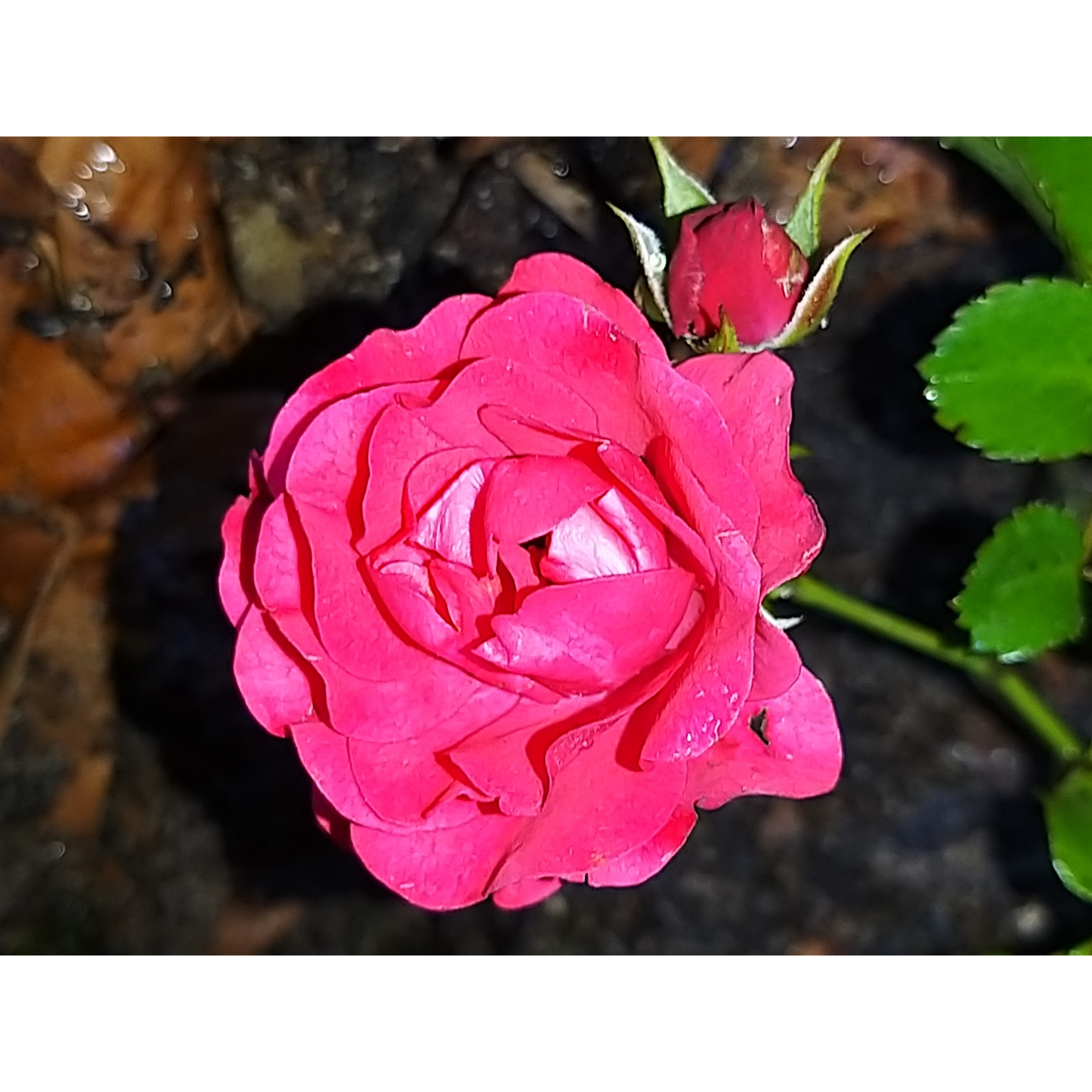

Rosa x polyantha - Sans Contraintes - 'Toscana' - Ground Cover Rose


Rosa x polyantha - Sans Contraintes - 'Toscana' - Ground Cover Rose


Rosa x polyantha - Sans Contraintes - 'Toscana' - Ground Cover Rose
View more pictures
Hide images

Thierry P.

August flowering - image 21
Thierry P. • 84 FR

Thierry P.

November flowering - image 6
Thierry P. • 84 FR

Thierry P.

July flowering - image 4
Thierry P. • 84 FR

Thierry P.

July flowering - image 3
Thierry P. • 84 FR
Rosa x polyantha - Sans Contraintes - 'Toscana' - Ground Cover Rose
Rosa x polyantha SANS CONTRAINTES® Toscana® 'Korstesgli'
Korstesgli
Charming little rose bush, very perennial and floriferous. It has a lovely effect as a border in the flowerbed. This is the rose bush that withstands the harsh conditions of my garden the best: very cold humidity, frequent and cold rains and winds, calcareous soil. It is in remarkably good health and grows regularly, unlike many others that I had to give up on (chlorosis due to the calcareous soil that the roots eventually reach). In short, a little marvel of a beautiful distinguished raspberry colour that stands out well against the greenery.
Marie, 09/09/2024
Special offer!
Receive a €20 voucher for any order over €90 (excluding delivery costs, credit notes, and plastic-free options)!
1- Add your favorite plants to your cart.
2- Once you have reached €90, confirm your order (you can even choose the delivery date!).
3- As soon as your order is shipped, you will receive an email containing your voucher code, valid for 3 months (90 days).
Your voucher is unique and can only be used once, for any order with a minimum value of €20, excluding delivery costs.
Can be combined with other current offers, non-divisible and non-refundable.
Home or relay delivery (depending on size and destination)
Schedule delivery date,
and select date in basket
We guarantee the quality of our plants for a full growing cycle, and will replace at our expense any plant that fails to recover under normal climatic and planting conditions.

Description
The 'Toscana' rose bush is a beautiful ground cover that unfurls a carpet of vibrant raspberry-red flowers from late spring until the first frost. Its miniature but double roses bloom in frothy clusters on densely packed foliage with a shiny dark green colour that remains decorative until the end of the season. Robust and hardy, this rose from the 'Sans Contraintes' series requires little attention or care from beginner gardeners. It can fit anywhere and works wonders in front of taller shrubs, on large borders along pathways or in a planter on the balcony.
The flowers of Rosa Toscana ('Korstesgli), gathered in terminal clusters, come from the polyantha rose, an old hybrid resulting from Rosa multiflora and Rosa chinensis. This excellent German variety obtained the highly selective and demanding German A.D.R label in 2001 for its high resistance to diseases, among other criteria. It was introduced in 1999 by the rose breeder Kordes. Kordes' 'Sans Contraintes' roses grow independently, requiring no pruning or chemical treatments, and will reward the little care they receive a hundredfold.
This wide and low bush has a dense habit, compact and well-covering vegetation, and develops spreading branches on the ground covered with thorns. In a few years, it will reach about 30 cm (12in) in height with a spread of 60 cm (24in), or a bit more if allowed to grow freely without pruning. The double flowers, 3 to 4 cm (1 to 2in) in diameter, gathered in large clusters, are abundantly produced continuously from May to October if the soil remains moist in summer. In this 'Toscana' variety, the flower buds open into globular flowers composed of many highly undulated petals. The plant develops elegant, well-packed foliage with thick and shiny small leaflets, transitioning from bright green to dark green. The leaves turn yellow in autumn before falling.
The 'Toscana' ground cover rose is exceptionally hardy and adapts to all soils that are not too dry and to all climates, making it suitable for many regions. Plant it as a border, in a bed, in a planter on the terrace, or on a large slope where it will cover the ground. It can also be planted in groups of 3 plants, arranged in a triangle, isolated on a lawn in a small garden. Plant it in groups or combine it with other ground cover roses of different colours to highlight a pathway or the borders of light or opulent shrubs and perennials. For example, it can be paired with hardy geraniums (Geranium Blue Cloud, Anne Folkard, Nimbus, Orion), bellflowers (lactiflora, rapunculoides), catmints, foxgloves, or other perennial salvias. It blends perfectly with all your shrub roses to add a lovely romantic touch to your garden.
Report an error about the product description
Rosa x polyantha - Sans Contraintes - 'Toscana' - Ground Cover Rose in pictures




Plant habit
Flowering
Foliage
Botanical data
Rosa
x polyantha
SANS CONTRAINTES® Toscana® 'Korstesgli'
Rosaceae
Korstesgli
Cultivar or hybrid
Planting and care
Planting your rose requires some preparation. Begin by working the soil to a depth of 25 cubic cm and adding a base amendment like blood, fish, and bone to the bottom of the planting hole. Remove the plant from its pot and position it by covering the top of the root ball with 3 cm (1in) of soil. Refill the hole and water generously to eliminate any air pockets. It's essential to water the rose regularly for a few weeks during dry weather to help the roots grow. Use a special rose fertiliser that stimulates plant flowering. Choose a sunny location or partial shade to plant your rose in hot regions.
Roses may develop unsightly spots at the end of summer, but this is a natural occurrence and doesn't harm the rose's growth
Planting period
Intended location
Care
-
, onOrder confirmed
Reply from on Promesse de fleurs
Similar products
Haven't found what you were looking for?
Hardiness is the lowest winter temperature a plant can endure without suffering serious damage or even dying. However, hardiness is affected by location (a sheltered area, such as a patio), protection (winter cover) and soil type (hardiness is improved by well-drained soil).

Photo Sharing Terms & Conditions
In order to encourage gardeners to interact and share their experiences, Promesse de fleurs offers various media enabling content to be uploaded onto its Site - in particular via the ‘Photo sharing’ module.
The User agrees to refrain from:
- Posting any content that is illegal, prejudicial, insulting, racist, inciteful to hatred, revisionist, contrary to public decency, that infringes on privacy or on the privacy rights of third parties, in particular the publicity rights of persons and goods, intellectual property rights, or the right to privacy.
- Submitting content on behalf of a third party;
- Impersonate the identity of a third party and/or publish any personal information about a third party;
In general, the User undertakes to refrain from any unethical behaviour.
All Content (in particular text, comments, files, images, photos, videos, creative works, etc.), which may be subject to property or intellectual property rights, image or other private rights, shall remain the property of the User, subject to the limited rights granted by the terms of the licence granted by Promesse de fleurs as stated below. Users are at liberty to publish or not to publish such Content on the Site, notably via the ‘Photo Sharing’ facility, and accept that this Content shall be made public and freely accessible, notably on the Internet.
Users further acknowledge, undertake to have ,and guarantee that they hold all necessary rights and permissions to publish such material on the Site, in particular with regard to the legislation in force pertaining to any privacy, property, intellectual property, image, or contractual rights, or rights of any other nature. By publishing such Content on the Site, Users acknowledge accepting full liability as publishers of the Content within the meaning of the law, and grant Promesse de fleurs, free of charge, an inclusive, worldwide licence for the said Content for the entire duration of its publication, including all reproduction, representation, up/downloading, displaying, performing, transmission, and storage rights.
Users also grant permission for their name to be linked to the Content and accept that this link may not always be made available.
By engaging in posting material, Users consent to their Content becoming automatically accessible on the Internet, in particular on other sites and/or blogs and/or web pages of the Promesse de fleurs site, including in particular social pages and the Promesse de fleurs catalogue.
Users may secure the removal of entrusted content free of charge by issuing a simple request via our contact form.
The flowering period indicated on our website applies to countries and regions located in USDA zone 8 (France, the United Kingdom, Ireland, the Netherlands, etc.)
It will vary according to where you live:
- In zones 9 to 10 (Italy, Spain, Greece, etc.), flowering will occur about 2 to 4 weeks earlier.
- In zones 6 to 7 (Germany, Poland, Slovenia, and lower mountainous regions), flowering will be delayed by 2 to 3 weeks.
- In zone 5 (Central Europe, Scandinavia), blooming will be delayed by 3 to 5 weeks.
In temperate climates, pruning of spring-flowering shrubs (forsythia, spireas, etc.) should be done just after flowering.
Pruning of summer-flowering shrubs (Indian Lilac, Perovskia, etc.) can be done in winter or spring.
In cold regions as well as with frost-sensitive plants, avoid pruning too early when severe frosts may still occur.
The planting period indicated on our website applies to countries and regions located in USDA zone 8 (France, United Kingdom, Ireland, Netherlands).
It will vary according to where you live:
- In Mediterranean zones (Marseille, Madrid, Milan, etc.), autumn and winter are the best planting periods.
- In continental zones (Strasbourg, Munich, Vienna, etc.), delay planting by 2 to 3 weeks in spring and bring it forward by 2 to 4 weeks in autumn.
- In mountainous regions (the Alps, Pyrenees, Carpathians, etc.), it is best to plant in late spring (May-June) or late summer (August-September).
The harvesting period indicated on our website applies to countries and regions in USDA zone 8 (France, England, Ireland, the Netherlands).
In colder areas (Scandinavia, Poland, Austria...) fruit and vegetable harvests are likely to be delayed by 3-4 weeks.
In warmer areas (Italy, Spain, Greece, etc.), harvesting will probably take place earlier, depending on weather conditions.
The sowing periods indicated on our website apply to countries and regions within USDA Zone 8 (France, UK, Ireland, Netherlands).
In colder areas (Scandinavia, Poland, Austria...), delay any outdoor sowing by 3-4 weeks, or sow under glass.
In warmer climes (Italy, Spain, Greece, etc.), bring outdoor sowing forward by a few weeks.








































